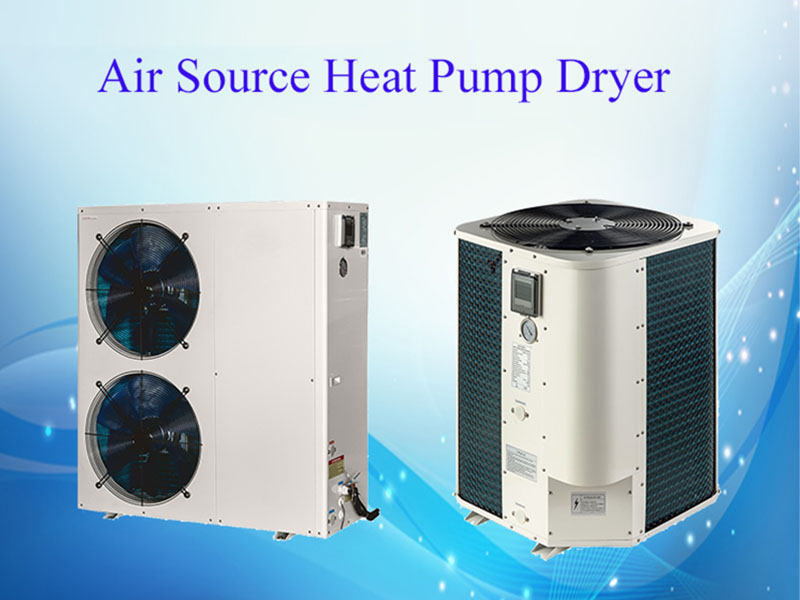
Drying is a process that exists in most industrial production and processing of agricultural products. It is also a common requirement in daily life.
Drying is also a high energy consumption process. Data show that the energy consumed for drying in most developed countries accounts for 7-15% of the total national energy consumption, while its thermal efficiency is generally less than 50%.
In the drying process, which kind of heat source to choose greatly affects the production cost. Due more and more attention to environmental protection, the new drying heat source has gradually become the mainstream, which is the air source heat pump.
The air source heat pump relies on the heat in the air to output, the first-degree electricity can carry the heat equivalent to the fourth-degree electricity, and the heating efficiency is equal to four times of the direct-heating equipment, or even no less than coal-fired.
In the working process of air source heat pump drying equipment, heat pump evaporator absorbs heat from the outside air, then the compressor work, transfers energy to drying room. The hot air in drying room is heated repeatedly, absorbs moisture from materials, and discharges moisture from materials through then process of hot air dehumidification or condensation drainage, finally realizes the connection of materials. Finally drying.
Of course, on the aspect of energy saving and emission reduction, air source heat pump drying will do much better than traditional drying equipment. Here comes the characteristics of traditional drying technology and air source heat pump drying technology.
A. The Characteristics of Traditional Drying Technology
1. Drying temperature is not easy to control, thus the drying quality is not good.
2. The drying time is too long. The traditional drying technology takes a long time to process 1 ton of material, and sometimes it takes longer to rework because of poor drying effect.
3. Large energy consumption. Traditional drying technology, the thermal efficiency is low, about 30%~ 60%. Among them, the heating and drying method of return fire in drying room is commonly used, and the thermal efficiency is about 40%.
4. It needs special person to take care of it, and there are risks of flammability and explosion.
B. The characteristics of Air Source Heat Pump Drying Technology
1. The drying temperature can be adjusted according to the material to meet various drying requirement.
2. Short drying time. Air source heat pump drying dewatering material production process, the time required to reduce by half than the traditional drying.
3. Good drying quality. Air source heat pump drying technology is a kind of mild and natural drying method. The drying products have good color and stable intrinsic quality. It is especially suitable for drying most of the heat-sensitive materials such as agricultural products and medicinal materials.
4. More safe. The operation of the whole system is a safe and reliable semi-closed drying system without the dangers of flammability, explosion, poisoning drying system without the dangers of flammability, explosion, poisoning and short circuit in traditional dryers (fuel oil, gas or electric heating)
5. Intelligent control is realized without special person’s supervision.
6. Lower energy consumption.
As an energy saving and environmental protection product, air source heat pump drying technology has also been strongly supported by national policies.
In the field of industrial and agricultural production, air source heat pump drying equipment can enjoy the welfare of “coal to electricity ” policy. So that all over the country have promoted “coal to air source heat pump drying”.
At present, air source heat pump drying technology has been widely used in grain, medicinal materials, dried fruit, preserved pulp, wood, aquatic products, tobacco, tea, and industrial drying links. This field has become another market growth point of air source heat pump.

